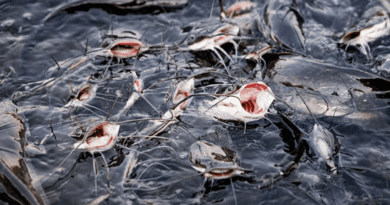How to Know Which Medicated Fish Feed to Use
Terramycin and Romet each has an important role in disease management of catfish. Table 1 is a summary of the advantages and disadvantages of each feed. Fish farmers associations in the U.S.A have approved Terramycin for control of Aeromonas and Pseudomonas infection and Romet for control of Edwardsiella ictaluri infections.
Ideally, however, the selection of an antibiotic should be made following isolation of the bacteria and performance of a sensitivity test.
A sensitivity test shows the ability of disease-causing bacteria to grow in the presence of several different antibiotics. If the bacteria are unable to grow in the presence of a certain antibiotic, a clear area, or “zone of inhibition,” is seen around the area treated with that drug. If the drug has no effect on the bacteria, they will grow all over the area containing the drug. The area will then have a cloudy appearance.
A fish health professional can perform a sensitivity test for you and recommend which antibiotic to use. Remember there are some circumstances when treatment with an antibiotic may not be necessary.
| Table 1. Advantages and disadvantages of the two medicated feeds, Terramycin and Romet, which are currently approved by FDA for use in catfish. | |
| Terramycin | Romet |
| Advantages: | Advantages: |
| (1) Effective against most bacteria which cause disease in channel catfish. | (1) Effective against Edwardsiella ictaluri and many Terramycin-resistant organisms. |
| (2) Available in many areas. | (2) Five-day treatment period and 3-day withdrawal period. |
| (3) Reasonable cost. | (3) Available in a floating feed. |
| Disadvantages | Disadvantages: |
| (1) Bacteria can develop resistance to this drug. | (1) Not effective against Flexibacter columnaris. |
| (2) Ten-day treatment plus 21-day withdrawal period. | (2) Availability is a problem in many areas. |
| (3) Only available in sinking feed. | (3) More expensive than Terramycin |
There are several ways by which a fish farmer can treat diseases in fish. The specific method applied depends on the type of disease and the situation. These are:
• Dip treatment – this is very effective for small number of fish.
• Flush treatment – this is better in treating a large number of fish.
• Indefinite bath – Chemical is added to the pond water and no flushing is done
• Feed treatment – This is mostly used to combat parasitic infections
Read Also: Marine reserves a solution to bycatch problem in Oceans
Read Also: Unearthing the Impact of Landfills on Our Environment









